What are Markup Tools?
Mark up or drawing tools are software platforms or browser-based solutions that allow you to visually annotate and comment on digital content such as websites, PDF files, images, design files, Figma files, etc. These software platforms streamline feedback, clarify bug reports, and simplify workflows for agencies, dev teams, and clients, turning a messy feedback process into clarity.
Website-specific mark up platforms enable direct, in-context annotations right on live web pages, automatically capturing technical data to simplify developer fixes. Design and PDF tools focus on enhancing creative workflows, ensuring compliance, and facilitating document reviews.
Types of Markup Options
Website
Best for real-time website feedback, bug reporting, and client communication.
- With platforms like BugHerd you can annotate directly in the browser. They capture browser details, device information, and turn every reported issue an into assigned tasks for designers and developers to action.
Best for documents, legal workflows, and regulated environments.
- Adobe Acrobat and Foxit lead this category with support for commenting, highlights, signatures, and collaboration. Essential legal, finance, or documentation-heavy industries.
Image & Design Files
Best for creative teams, designers, and a solid collaboration process.
- MarkUp.io, Figma, and Ziflow integrate with design platforms, supporting layered mark ups, artboard management, and audit cycles.
Video
Best for multimedia and agencies working on video content.
- Frame.io and Filestage are comment tools that enable frame-by-frame commenting, time-coded input, and collaborative video feedback.
Free vs Paid
Best for individual users, students, or small projects.
- AnnotateWeb and Diigo offer free web page annotation with basic functionality. Free tiers often lack key features such as integrations, team management, and workflow automation. Agencies see strong ROI when using a paid tool that eliminates manual steps, organizes input, and reduces revision cycles.
Top 15 Markup Tools
1. BugHerd: Best for Website Feedback, Bug Reporting & Client Communication
BugHerd transforms busy feedback review cycles into structured, visual tasks. Designed for agencies, web designers and developers, it’s the only tool focused entirely on the website process, making getting client input on websites ridiculously easy.
Point-and-click website feedback
Web developers, web designers, clients, testers, etc, can use the arrow icon to click directly on any element of a live or staging website, and drop a pin/comment (like sticky notes on a page). You can also attach/upload files to provide more information. More on website markups
Document, image, design & PDF markups
BugHerd also supports input on software prototypes, PDF documents, images, and design files. How to check designs, images and docs using BugHerd
Video feedback
BugHerd lets you expand how you provide input on web pages and report bugs, by enabling you to create a recorded video along with audio. It’s the easy way to leave feedback on multi-step interactions, animations, and anything else that’s difficult-to-describe with written words alone. Capturing feedback via video with BugHerd
Automatic metadata capture
When an issue is reported, BugHerd automatically captures relevant technical details: browser type/version, operating system, screen resolution, element selector, URL, etc. This gives developers the context they need without having to ask follow-up questions. How BugHerd captures metadata
Built-in Kanban-style task board
Each note is automatically converted into tasks on a board view where you can easily assign, prioritize, and action each task, and receive notifications via messages. This makes QA cycles more visible and manageable. Easy task tracking with BugHerd
BugHerd two-way integrations
BugHerd integrates with platforms that you already use (e.g., Jira, Trello, Asana, Slack, GitHub). This ensures input flows into existing workflows rather than requiring duplication. See all BugHerd integrations
Guest/client friendly feedback
Non-technical clients or stakeholders don’t need to set up a log in or intall anything. They can provide feedback easily via a share link. More on no client login
Public feedback widget
BugHerd includes a public widget that you can enable so that website visitors can add comments or bug reports directly on the site. This supports ongoing QA/monitoring post-launch. Capturing feedback from all website visitors
BugHerd Pricing
BugHerd plans start at $42/month for up to 5 members, including unlimited projects and unlimited guests. All plans include a 7-day free trial with no credit card required.
“BugHerd helps you get rid of the cumbersome process of bug reporting … Its visual and collaborative design outshines traditional bug trackers.” - Almas Web Consulting
2. Usersnap
Highlights: Bug reporting for web and product development; supports micro-surveys, and integrates with Jira, Slack, and Zendesk.
Usersnap offers several paid tiers starting at $51/month for the “Starter” plan, and scales up to a custom-priced “Enterprise” tier for large organizations.

3. Marker.io
Highlights: Deep integration with PM tools (Jira, Trello), browser extension pins comments, best for small web agencies.
Plans start at $39 per month (billed annually) for the Starter tier (up to 3 seats). A 15-day free trial is available for all plans.

4. Adobe Acrobat
Highlights: Robust PDF edit and annotation function, digital signatures with pencil tool, group collaboration, and compliance processes.
The 'Standard' individual plan starts at $12.99 per month and the “Pro” individual plan at $19.99 per month. A free 7-day trial is available for Acrobat Pro.
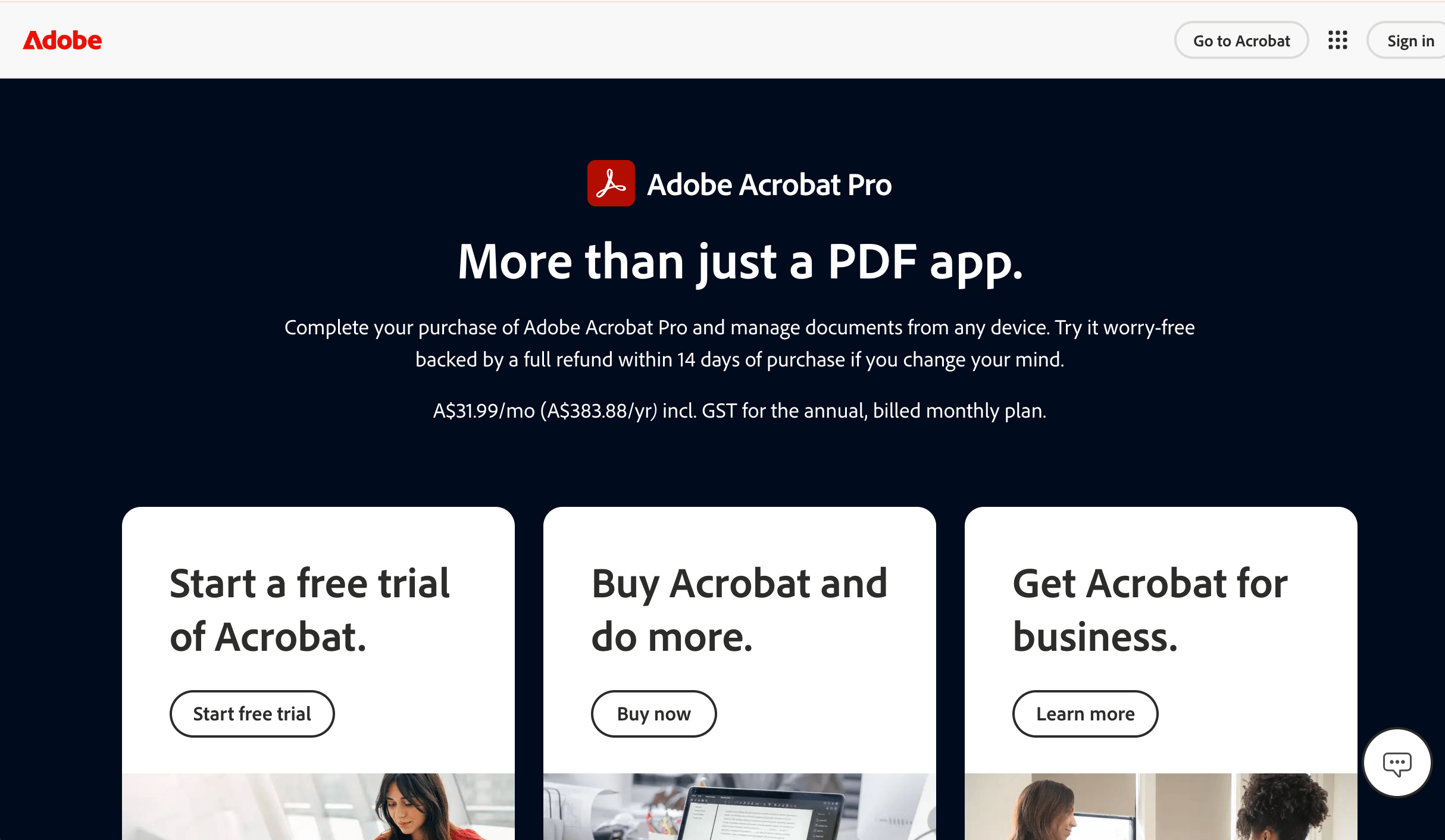
5. MarkUp.io
Highlights: MarkUp.io includes a creative ideas focus, ideas capture, image annotation, on websites, design files and artboards. Supports 30+ file types.
The entry-level Pro plan is priced at $79/month - includes unlimited people, unlimited mark-ups and a 30-day free trial.

6. Pastel
Highlights: Pastel is a simple annotation platform for web designers and developers, with browser-based pins, and integrations into with Slack and other platforms.
Paid plans start at $35/month for 2 people and $119/month for 5 people. All paid plans come with a free 14 day trial. Pastel also offers a free forever plan but it is limited to one user, and one project.
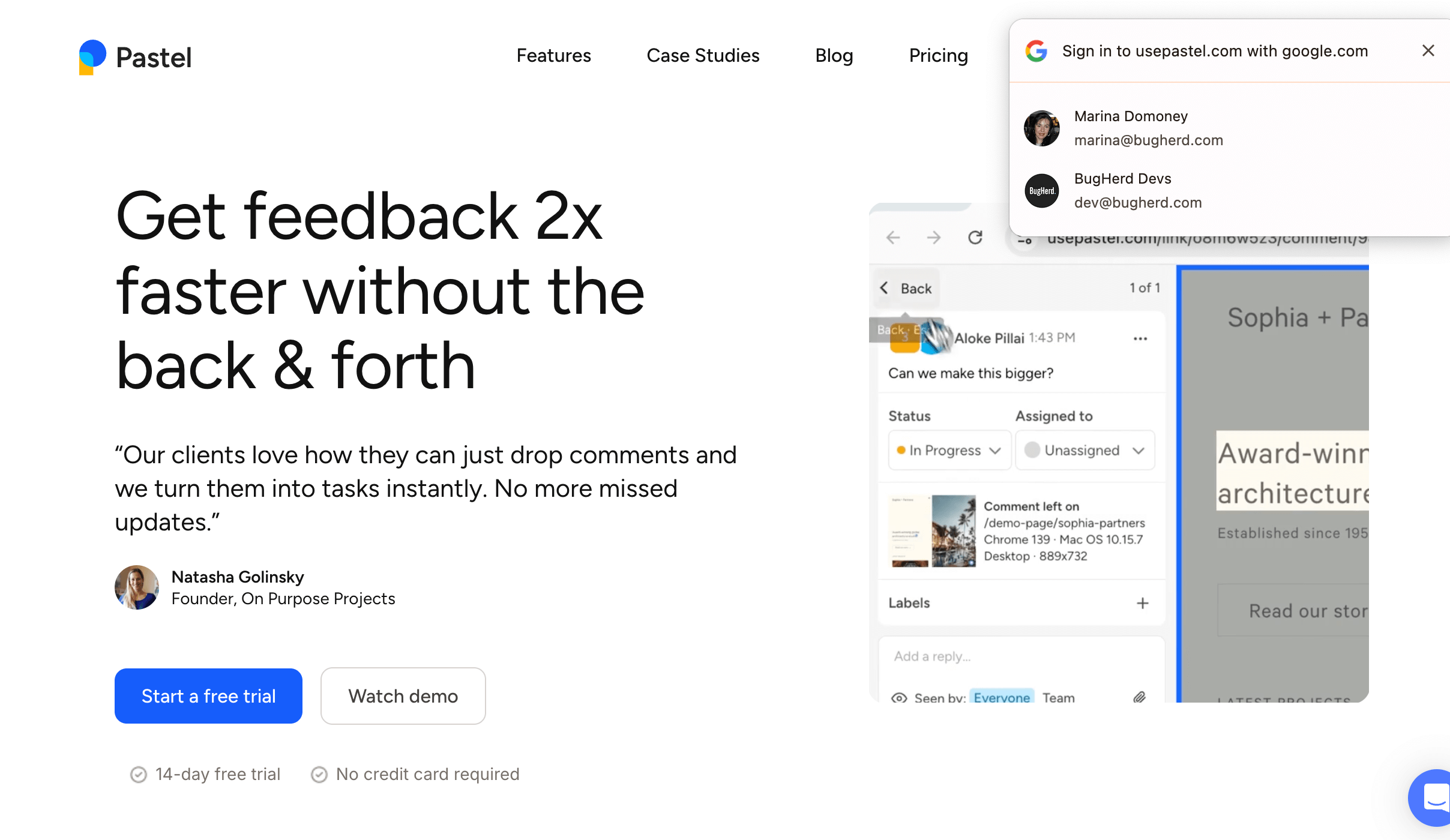
7. Filestage
Highlights: Captures user input and ideas on PDF files, images, videos, and docs.
Filestage offers a Free plan which supports up to 2 active projects. Paid plans start at $109/month and a 30-day free trial is available.

8. Figma
Highlights: Real-time collaboration, design annotation, powerful integration ecosystem.
Figma offers a free (Starter) plan good for those working on personal projects and who need basic design, presentation, and brainstorming. Paid plans begin at $12-16 per person per month.

9. Ziflow
Highlights: Approvals, annotation, and version control for agencies. Create custom automations and processes so assets go through predefined steps
Ziflow offers a forever free plan for up to 2 people and 1 project. Paid plans start at $199/month for up to 15 people.

10. Markup Hero
Highlights: Provide input on web pages, images, screenshots and attachments.
Markup Hero offers a free plan but it is limited to 1 user and 25 markups. Plan prices start at $5 per month per user but take note of what is included as there are limitations.
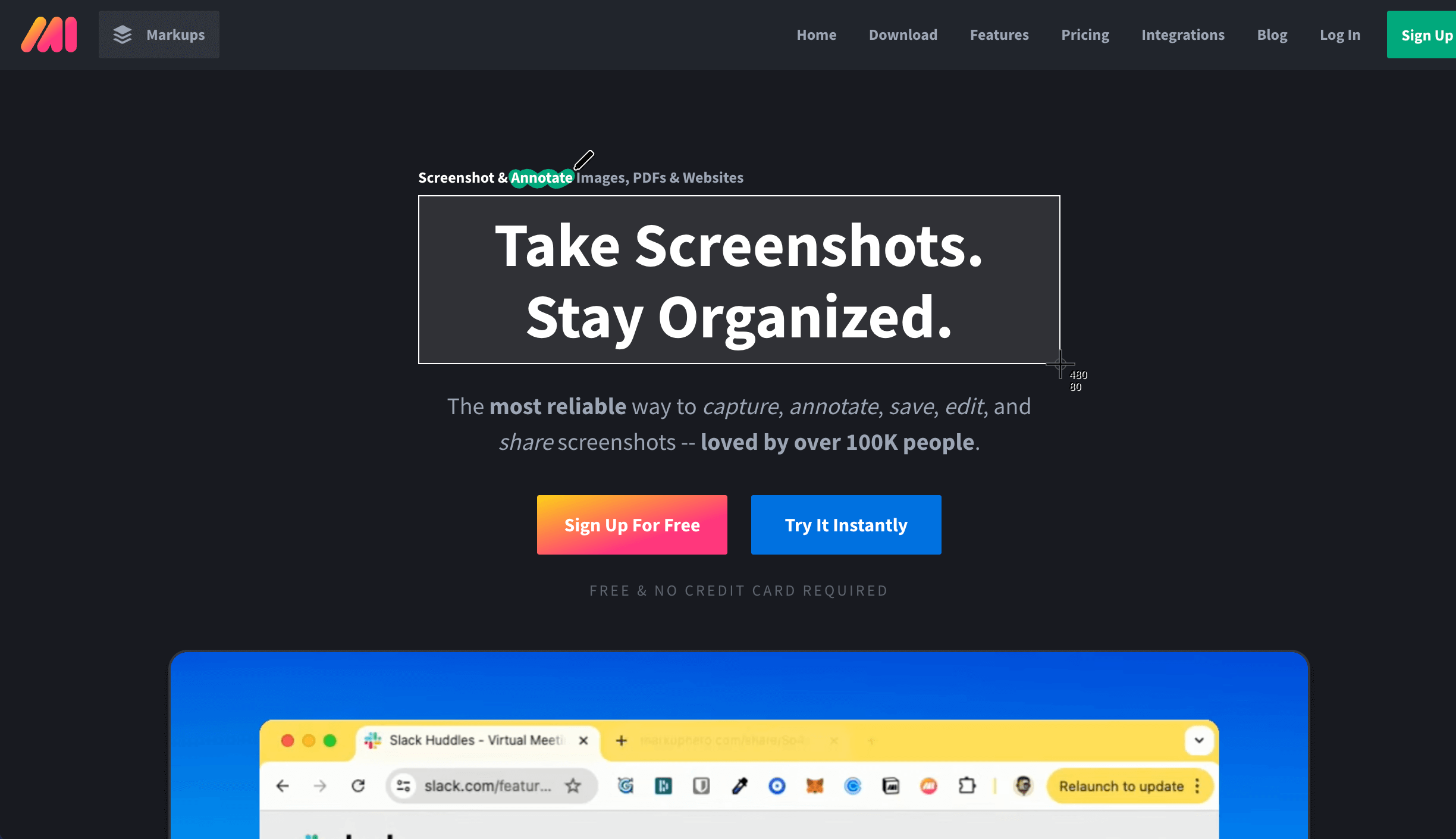
11. AnnotateWeb
Highlights: Annotation tool for live web pages. Simple website markup where no registration is required. Limited features.
AnnotateWeb is free to use but note that it is a basic markup solution and does not include features that other markup platforms have.
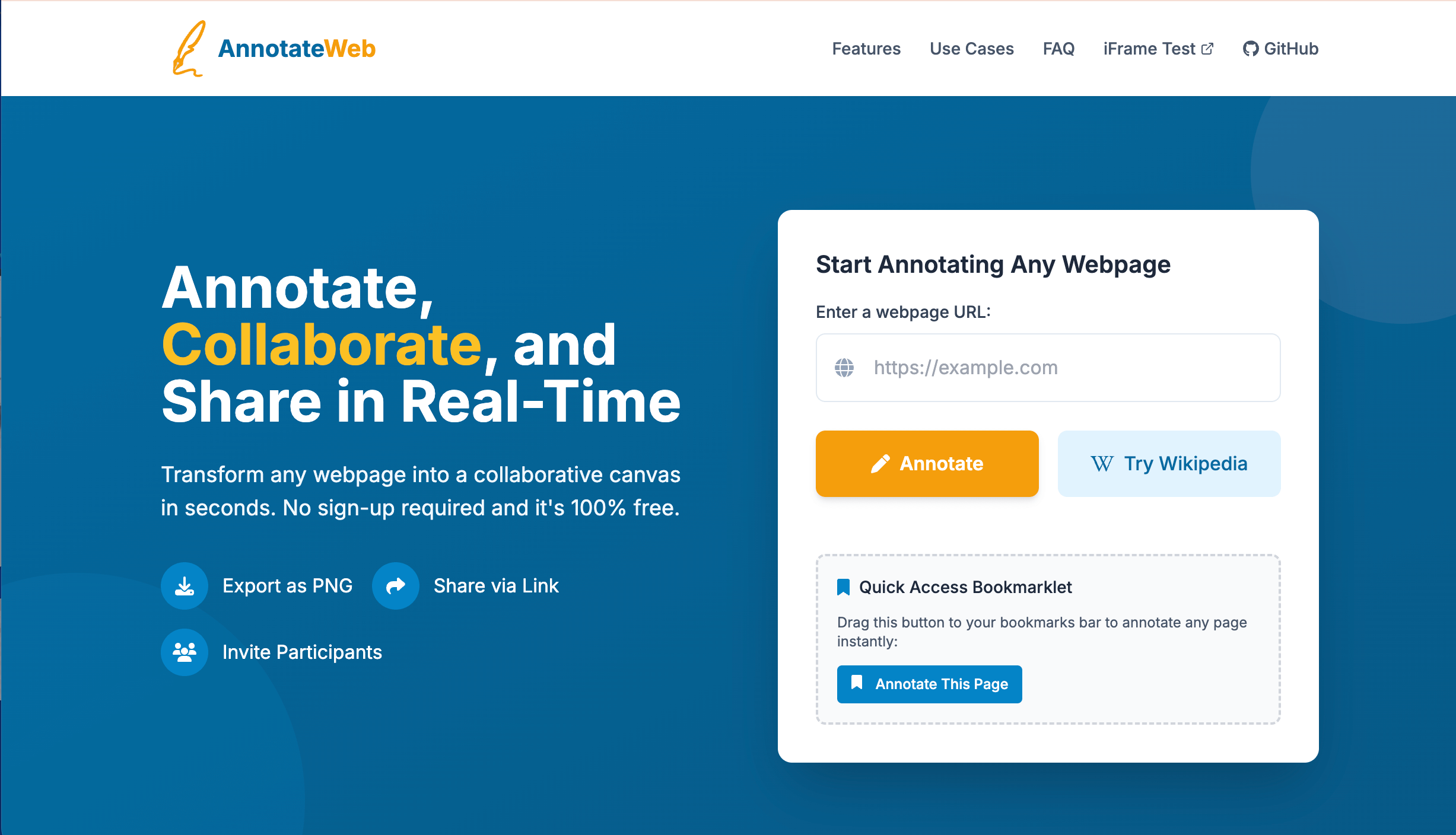
12. Frame.io
Highlights: Time-coded input, video collaboration, and Adobe Premiere integration. Attach/upload, and organize files in a structured cloud workspace.
Frame.io offers a Free plan that includes limited features for up to 2 people, 2 GB of storage and up to 2 projects. Frame.io paid plans start at $15/month per user and supports up to 5 people, and provides 2 TB of storage.

13. Atarim
Highlights: Visual feedback attachments for WP sites, team chat, and integration with project management.
Atarim offers a free plan for one user and 2 projects. Paid plans begin at $29/month (Pro plan) for five projects and five people. Note that both the free and Pro plans come with feature limitations.

14. Foxit PDF File Editor
Highlights: A powerful PDF solution that enables quick editing, annotating, converting and securing of docs with enterprise-level features in one streamlined platform.
Subscriptions for Foxit PDF Editor begin at around $15 per user/month. A free trial is also available.
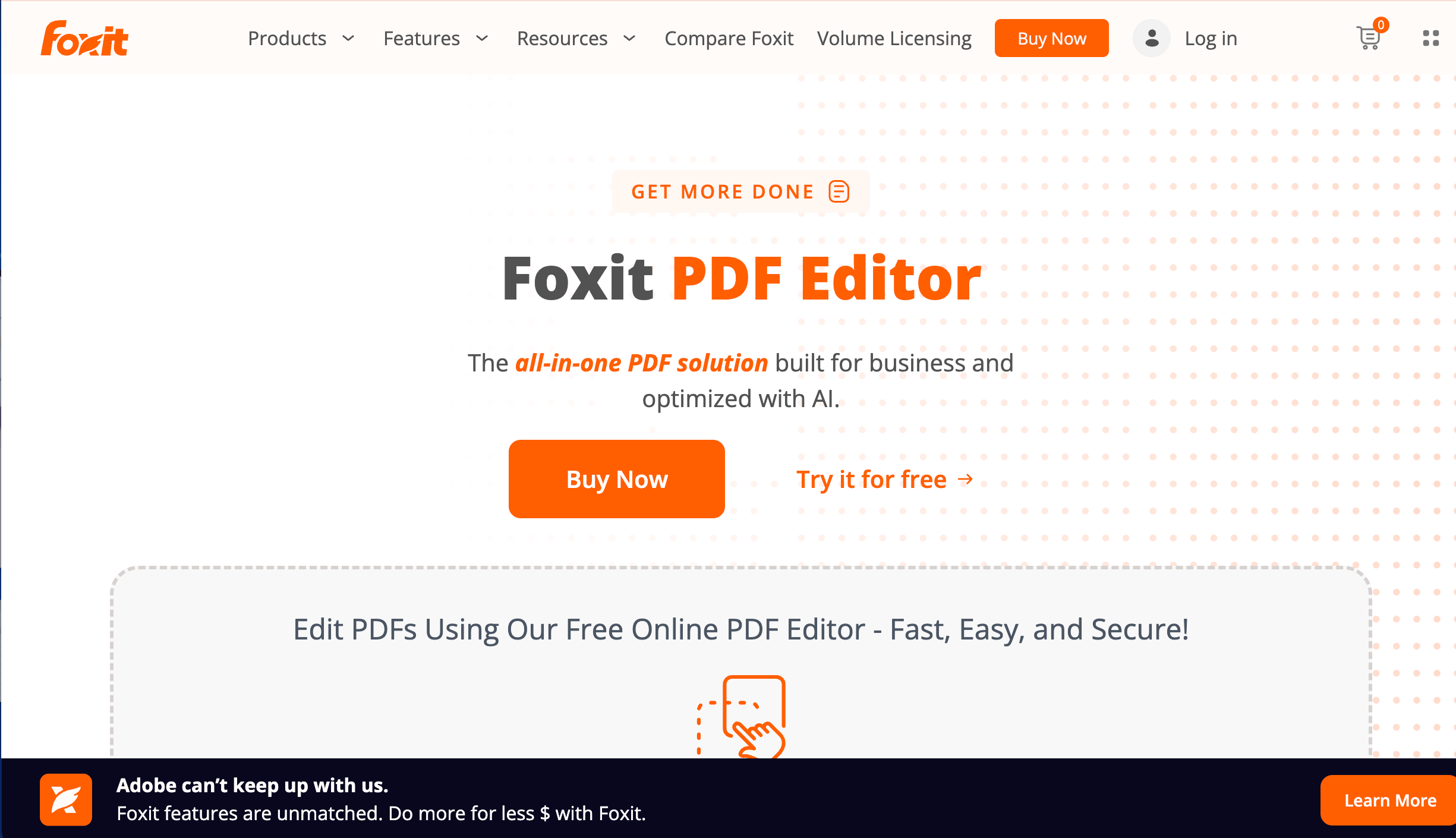
15. Diigo
Highlights: Web/highlighting/bookmarking, good for personal annotation, but limited for groups.
Diigo offers a basic free tier is available, with paid plans starting at $10/month per user.
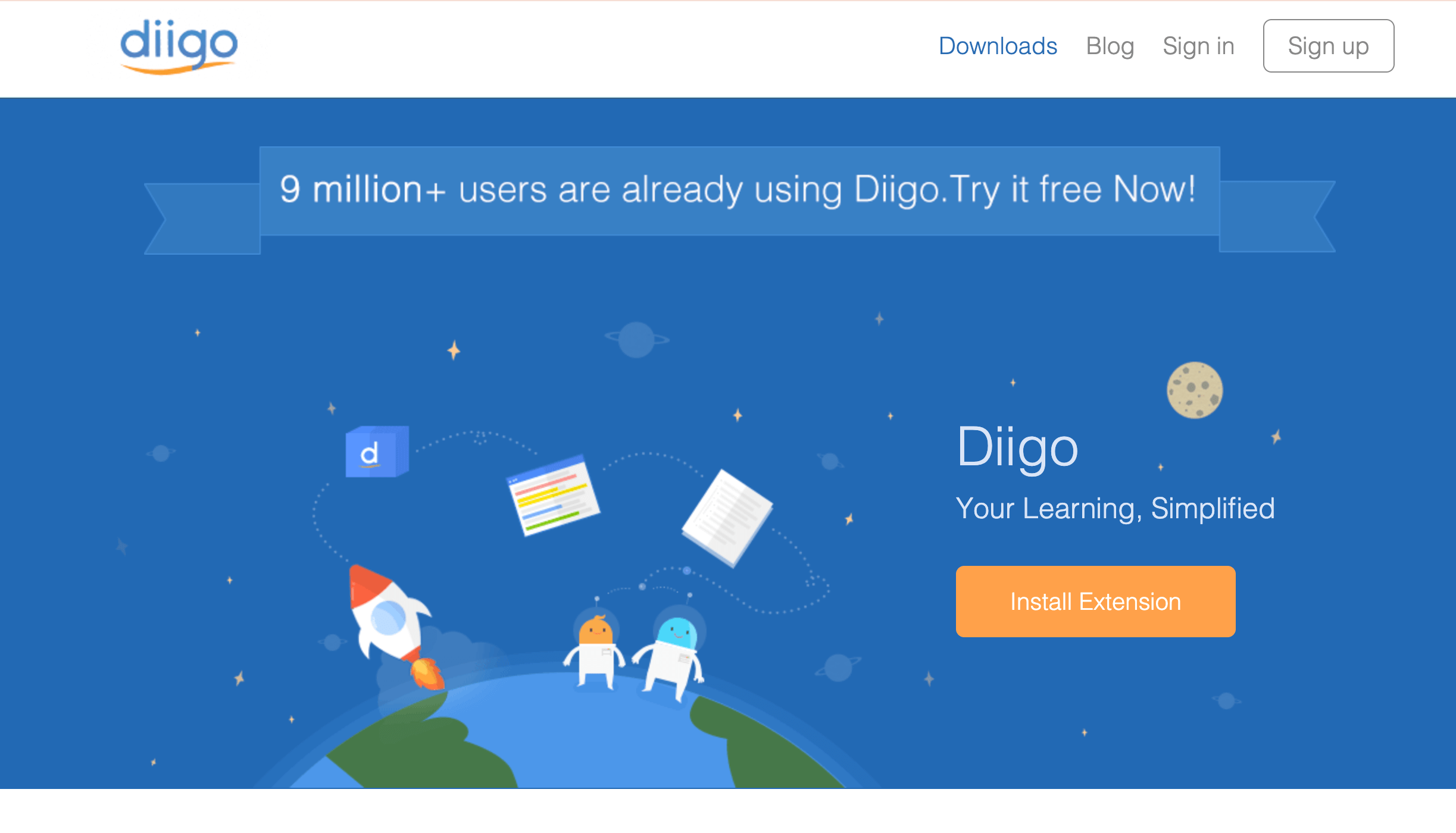
Top 15 Markup Tools Comparison Table - 2025
Free Markup Tools - Are They Worth It?
Free software platforms like AnnotateWeb and Diigo are suitable for small projects and individual use, but lack the advanced features, such as task management, integrations, and automatic bug tracking, that agencies and development teams need. Pastel offers a restricted free tier, which is a good starting point, but it limits collaboration. As projects become more complex, paid solutions become essential for quality assurance and rapid turnaround.
Free tiers often:
- Cap team size
- Limit the number of markups per month
- Can't be used on images, PDFs, etc.
- Block integrations with project management software
- Lack of reporting, notifications, and audit trails
Which Mark up Tool Should You Choose to Save Time & Fast Track your Review Process??
In 2025 using software for marking up changes is essential for fast, visual collaboration across web pages, PDFs, and design assets. They eliminate messy email chains, and help deliver web projects with clarity and precision. BugHerd leads the pack for website QA and client feedback, while options like Filestage, Ziflow, and Adobe Acrobat excel in creative and doc reviews. Whether you’re a designer, developer, or project manager, the right mark up tool transforms remarks into actionable tasks - helping you work smarter, communicate clearly, and produce higher-quality results in less time.
Frequently Asked Questions
What is the difference between mark up tools for websites vs PDFs?
Website tools annotate live web pages and capture technical data; PDF tools focus on document annotation, collaboration, and compliance. They can also be used on images.
Which markup tool is best for agencies?
BugHerd is the best mark up tool for creative and digital agencies that develop websites. It makes it very easy for clients to provide input. BugHerd automatically captures a screenshot along with technical data, and turns every comment into a task to be assigned, prioritized and actioned. The platform is also used for input on PDFs, images, Figma files, etc. You can even attach/upload Word docs for extra information. It can be accessed via the Chrome Extension or start a free trial.
“Managing our WordPress services… has been further simplified by the use of BugHerd tools. It makes it really simple to collect feedback and collaborate with our clients." - WPism
Are there free mark up tools that work well?
AnnotateWeb and Diigo serve basic needs well. Paid upgrades are recommended for web agencies that will require full features.
How do mark up tools integrate with project management?
Most top tools offer direct integration with Jira, Trello, Asana, ClickUp, and Slack for seamless workflow.
Can non-technical users use markup tools easily?
Mark up platforms such as BugHerd are perfect for non-technical people and all other users, because they are built for simplicity, offering a simply point-click-pin function, with no logins required. Annotating screenshots is a breeze and you can provide input via a number of ways (eg. attach/upload files).
What's the difference between BugHerd and Usersnap?
BugHerd is website-focused and it's very easy to provide input by simply pinning a message, and drawing attention to areas that require changes. The Usersnap is not as user friendly, especially for non-technical people. Read more about the differences here.
Which mark up tools integrate with Figma?
BugHerd, Markup.io, Filestage, and Ziflow offer compatible integrations.
Can mark up tools capture technical browser information?
BugHerd automatically captures technical browser information as well as page URL, OS, screenshots, screen resolution, etc.
Ready to Transform How you Collect Feedback?
Ditch confusing email chains and switch to effortless, visual markup. Try BugHerd today, sign up for your free trial or book a 1:1 demo with our experts, and see how quickly client chaos turns into clarity.



.png)













But don't just take our word for it.
BugHerd is loved by 10,000+ companies,
350,000+ users across 172 countries.
4.8/5
4.7/5
4.5/5
5/5
8.7/10
Sam Duncan 📱📏 🌱
@SamWPaquet
"@bugherd where have you been all my life??
We just migrated our bug tracking over from Asana and have at least halved our software testing time🪳👏📈. "
Ashley Groenveld
Project Manager
“I use BugHerd all day every day. It has sped up our implementation tenfold.”
Sasha Shevelev
Webcoda Co-founder
"Before Bugherd, clients would try to send screenshots with scribbles we couldn't decipher or dozens of emails with issues we were often unable to recreate."
Mark B
Developer
“A no-brainer purchase for any agency or development team.”
Kate L
Director of Operations
"Vital tool for our digital marketing agency.”
Paul Tegall
Delivery Manager
"Loving BugHerd! It's making collecting feedback from non-tech users so much easier."
Daniel Billingham
Senior Product Designer
“The ideal feedback and collaboration tool that supports the needs of clients, designers, project managers, and developers.”
Chris S
CEO & Creative Director
“Our clients LOVE it”
Emily VonSydow
Web Development Director
“BugHerd probably saves us
at least 3-4hrs per week.”